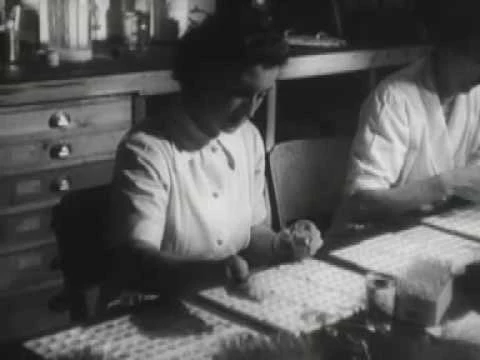Medical Texts (1858+) ..
Emergency & Medical - WW2 - tb >> .
Student Nurse (1944) (32min) > .
https://vimeo.com/39475629 .
Videos of 30s surgery .
Emergency & Medical - WW2 - tb >> .
Fire Services — NFS, AFS, LFB - tb >> .
>> Tony Blake >> .
>> Wellcome Library historic medical playlists >> .
War and medicine >> .
Anaesthesia >> .
Veterinary medicine >> .
1940 UK Blitz Hospital, Doctors and Nurses Treat Patients, WWII Archive Footage > .
1940 UK hospital, Blitz era, WWII, Injured Patients, Rare Archive Footage > .
1940 Blitz-era, UK Hospital Reception, Rare WWII Archive Footage > .
Civilian Blood transfusion (1941) > .
Military Documentaries - Timeline >> .
https://www.youtube.com/watch?v=36GXIE7rvNs .
https://www.youtube.com/watch?v=ru0tfK8IodQ .
Innovations arising in WWI > .
War and peat: how bog moss helped save thousands of lives in World War I
https://theconversationuk.cmail20.com/t/r-l-jtltuduy-djjiirdtlj-p/
Sphagnum moss made ideal field dressings for wounded soldiers.
World War I: the birth of plastic surgery and modern anaesthesia
https://theconversationuk.cmail20.com/t/r-l-jtltuduy-djjiirdtlj-x/
Medical advances were the only positive things to come out of the Great War.
World War I: the forgotten housewives who helped win the battle on the home front
https://theconversationuk.cmail20.com/t/r-l-jtltuduy-djjiirdtlj-b/
Battling shortages and rising food and fuel prices, housewives played a vital part in Britain's first experience of 'total war'.
How World War I changed British universities forever
https://theconversationuk.cmail20.com/t/r-l-jtltuduy-djjiirdtlj-u/
Estimates suggest that Oxford lost 19% of those who served, Cambridge 18%, and Manchester and Glasgow 17%.
World War I: is it right to blame the Treaty of Versailles for the rise of Hitler?
https://theconversationuk.cmail20.com/t/r-l-jtltuduy-djjiirdtlj-h/
The Treaty of Versailles is often named as the main cause of World War II. But this is an overly simple explanation.
Collecting herbs for pharmaceuticals > .
Meadowsweet, white willow bark -- ASA
Cleavers (goosegrass) -- infection, lymphatic stimulant
Drying herbs + > .
Sage
Foxglove - digitalis
Vitamin C – rosehips – syrup > .
Cultivated Rx - Healing Plants, Grow Your Own Medications - anth >> .
Plants - Medicinal & Toxic - BeSi >> .
Medicinal Foraging, Grow Your Own - Sav >> .
Edwardian Farm & Edwardian Country House >> .
WW2: nettles used for treatment of asthma > .
Lectures inserted
Nursing training > .
The widespread acceptance of the germ theory of disease in the second half of the 19th century sparked a revolutionary change in the understanding of the vital role that microbes play in infectious diseases. Specific bacterial, fungal, and viral pathogens were identified as the causative agents of many serious diseases, and a race immediately began to find effective means to attack these implicated microbes. Vaccines were deployed to prevent infectious disease by educating the host’s immune system with the attenuated or killed microbe of concern. However, they were not an effective remedy against acute infections. Chemical weaponry against bacterial diseases that could rapidly act alone or in concert with the host immune system to clear preexisting infections was discovered just before the turn of the 20th century. The German physician Paul Ehrlich investigated medicinal dyes that would specifically bind to and destroy pathogenic parasites and bacteria, but not harm the host. As the founder of modern chemotherapy, he sought after a “magic bullet” that could target the causative spirochete in syphilis, a devastating, widespread, and incurable disease, which was known since the Renaissance. In 1910, Ehrlich discovered the arsenic-containing chemical dye he eventually named Salvarsan. It was the first chemical compound shown to cure syphilis (Schwartz, Thoburn, Winau). Learn more about Paul Ehrlich in this short documentary.
WW1
A Fate Worse Than Death - Disfigured Veterans of WW1 - tgw > .



No comments:
Post a Comment
Note: Only a member of this blog may post a comment.